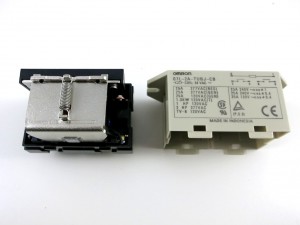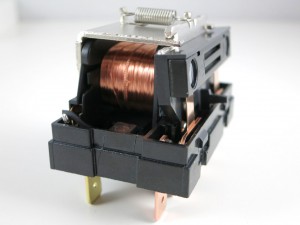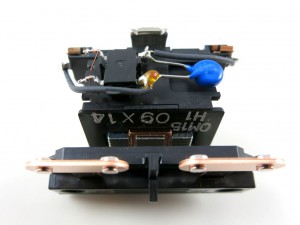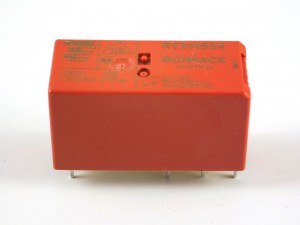Back in early December last year, we introduced a new feature in OpenSprinkler Firmware 2.1.1 that allows OpenSprinkler to directly talk to remote power sockets. With this feature, you can use OpenSprinkler to not only switch sprinkler valves, but also switch powerline devices such as light, pump, heater, fan. While it’s a powerful feature, it is after all a wireless solution so it’s not the most reliable — sending wireless signals to remote power sockets is prone to interference and is limited by distance and barriers (e.g. walls, floors) in between.
If you still prefer using relays, whether because it’s more reliable, or because it’s the classic way, there are plenty of choices. I’ve often received questions about how to use OpenSprinkler with a relay. The easiest solution is to get a 24V AC relay. Then you can wire it up as if it’s a sprinkler valve — when OpenSprinkler turns on the corresponding station, the relay is activated, and that turns on the device connected to the relay. Because AC relays are not as common as DC relays, they tend to be more expensive. Here I list three choices I’ve found:
1. Omron G7L-2A-TUB-J-CB-AC24: this is available on Amazon. This is actually commonly used in sprinkler pump start relays — if you have a pump start relay, you can open it up and check if it has a 24V AC relay in side. This particular one has a contact rating of 25A @ 220VAC, which is sufficient for most applications. You can also find similar ones with different specifications: if you search for ‘Omron G7L-‘ you will find many choices, look for the ones ending with AC24, which are the 24V AC versions.
I am quite curious how such 24V AC relays work. It probably is constructed somewhat differently from a DC relay. So I ventured to open it up. As you can see in the picture on the right above, it has a big coil, a contact piece connected via a spring. When voltage is applied on the coil, the contact piece gets attracted and therefore connecting two contact pins together. That’s how a basic relay works.
Something strange I noticed is that when I try to measure the resistance on the coil, it gives me a very large value — several mega-ohms. The coil resistance can’t be that large. There is probably additional circuitry inside the relay. I then measured the forward voltage drop on the coil, at either polarity it gives about 1.25V drop, which strongly indicates there is a bridge (i.e. full-wave) rectifier inside. This makes sense, because a bridge rectifier is a standard way to convert AC to DC. So the additional ‘construction’ inside the AC relay (compared to DC) is probably the rectifier.
To verify it, I had to open it up even further, which involves cutting some pieces of the plastic. Eventually I was able to open it up completely. Check the bottom section of the relay:
Yup, there is a bridge rectifier and a MOV. Previously I was measuring the resistance through the bridge rectifier, which explained why the value I got was incorrect. Now I can measure the real resistance of the coil, which turns out to be about 294 ohm. That’s about right — under 24V AC, it will draw an average of about 80 mA AC current, which matches the specification.
So in case you are looking for a 24V AC relay to work with OpenSprinkler in order to switch high-voltage devices, this is an inexpensive (<$10) choice and is easy to find. 2. Schrack RT314524: This is a very small 24V AC relay that you can buy from Mouser or Digikey. It has a contact rating of 16A @ 250VAC, which is also plenty for common applications.
3. Other choices: There are some other choices which were brought up on the forum, including a open-style panel mount 24V AC relay, and even solid-state relays (SSRs).
In any case, if you are looking for a relay to work with OpenSprinkler, the above are the ones worth considering.



